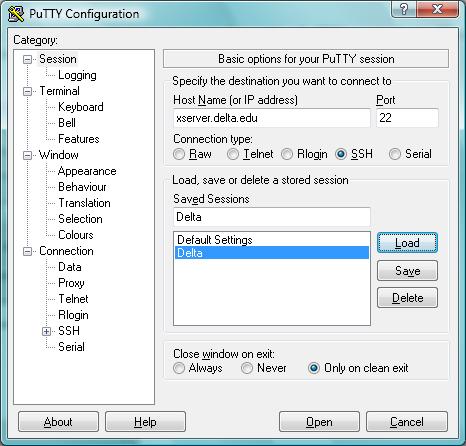ex. 1

There is no need to modify the other settings. Just make sure you save your configuration as instructed above.
ex. 1

There is no need to modify the other settings. Just make sure you save your configuration as instructed above.
Warning: Linux (and Unix) are case sensitive - IDs and passwords are typed in lower case and you will not see anything happen on the screen when you type your password. Also, if you mess this up too many times, you'll probably be locked out of the system and have to call the helpdesk and get your ID reset. Do it right the first time!
Once you get logged in, you'll be presented with a $ prompt. This means you are ready to enter commands in the Linux system.
Type 'exit' to leave.